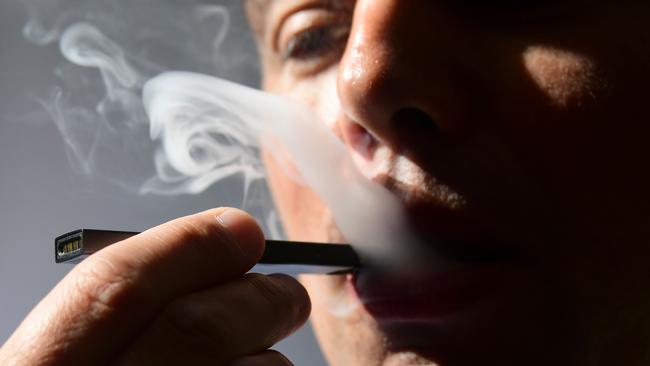Nicotine, other chemicals found in ‘nicotine-free’ e-cigarettes
Nicotine and other potentially harmful chemicals found in six varieties of “nicotine-free” liquids bought from Australian suppliers.

Nicotine has been discovered in supposedly “nicotine-free” e-cigarette liquids amid the debate over Australia’s strict regulation of vaping products.
Advocates for vaping, including traditional tobacco companies, want the federal government to loosen the restrictions on nicotine to allow it to be used in e-cigarettes and vaporisers. They argue it would offer a safer alternative to smoking and help people quit.
However, health authorities want the restrictions to remain, concerned that vaping encourages people to take up smoking and undermines efforts to prevent cancer.
In The Medical Journal of Australia today, researchers reveal nicotine and other potentially harmful chemicals have been found in six varieties of “nicotine-free” e-cigarette liquids bought online and over the counter from Australian suppliers.
The researchers from the Telethon Kids Institute, University of Western Australia and Curtin University conducted their investigation with funding from the Australian Competition and Consumer Commission, WA health department and National Health and Medical Research Council.
“E-liquids containing nicotine cannot legally be sold in Australia, but inaccurate labelling means that users may unwittingly inhale this addictive substance, or retailers may sell incorrectly labelled nicotine-containing e-liquids to willing customers,” they conclude.
A national survey reported by the Australian Institute of Health and Welfare in August revealed the attraction of e-cigarettes — without the introduction of nicotine — varied by age group.
The main reason people aged 18-24 gave for using e-cigarettes was “out of curiosity” (70.7 per cent), whereas for people aged 50-59 it was “to help me quit smoking” (51 per cent).
Federal Health Minister Greg Hunt supports the nicotine restrictions but, under pressure from vaping advocates and members of his party, has reportedly allowed for an inquiry into the evidence.
With tobacco still the leading cause of cancer in Australia, governments and health authorities set out to reduce the proportion of daily smokers to 10 per cent by last year. However, the final figure came in at 13.8 per cent, down from 14.5 per cent in 2014-15.
Men continued to smoke more than women, and the habit was more common in disadvantaged areas, with the gap between indigenous and non-indigenous communities remaining.


